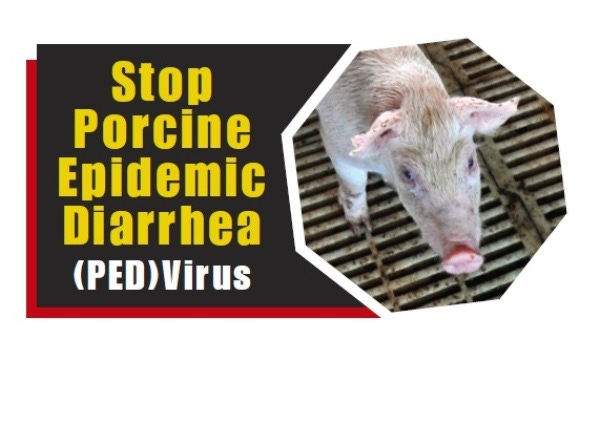Pace of PEDV Cases on the Rise
January 2, 2014

The National Animal Health Laboratory Network (NAHLN) of USDA’s Animal and Plant Health Inspection Service added 66 new cases of porcine epidemic diarrhea virus (PEDV) to those reported during the week of Dec. 15, 2013, making last week's total of 185 the highest since beginning of the outbreak, reported the American Association of Swine Veterinarians (AASV).
Interim analysis of a North Carolina biosecurity questionnaire identifies potential risk factors associated with exposure to PEDV. The data from USDA APHIS Centers for Epidemiology and Animal Health, are preliminary and will likely change as additional data is collected and analyzed. Below is a table outlining the percentage of case and control herds reporting potential risk factors. Additional preliminary results can be viewed on the University of Minnesota's Swine Health Monitoring Project website.
Factor | Percent of case farms with factor | Percent of control farms with factor |
Borrowed trailers from another swine site in previous two weeks. | 11% | 0% |
Removed cull sows/gilts/boars/pigs in previous two weeks. | 82% | 38% |
Removed weaned pigs to nursery or wean to finish site in previous two weeks. | 89% | 42% |
Producer/family worked off farm in an abattoir or other swine farm. | 37% | 17% |
Producer/family worked off farm in another area of the swine industry (e.g., feedmill). | 11% | 0% |
Dead haul/renderer visited site to pick up dead pigs in previous two weeks. | 93% | 57% |
Wild birds were seen in pig/hog buildings in previous two weeks. | 18% | 4% |
Other wildlife was seen in pig/hog buildings in previous two weeks (e.g., rats, mice, raccoons). | 89% | 59% |
Had a moderate or severe problem with birds (e.g., buzzards) in previous two weeks | 29% | 13% |
Delivered pigs to communal carcass drop-off spot in previous two weeks. | 11% | 38% |
The PEDV Strategic Task Force has recommended that everyone consider the Good Neighbor Policy when possible with regards to placing PEDV-positive pigs. This includes trying to find a site that minimizes the risk of exposure to neighbors with susceptible pigs and communicating with your neighbors if it is necessary to place positive pigs in close proximity to other pigs.
Like what you’re reading? Subscribe to the National Hog Farmer Weekly Preview newsletter and get the latest news delivered right to your inbox every week!
It should be noted that, even though clinical signs resolve fairly quickly, pigs may shed virus for 40-60 days post-infection, the AASV report noted. A model for this suggestion is the recommendations proposed by the Indiana Board of Animal Health regarding PRRS-positive pig placement. These recommendations have been posted on the AASV PRRS web page
The PEDV Strategic Task Force is also exploring the development of a “Rapid Response Team” that could investigate occurrences of emerging diseases such as PEDV. Angela Baysinger, DVM, Health Assurance veterinarian at PIC, has agreed to help facilitate an investigation into some recent outbreaks in Iowa as a “pilot project” for future response team action.
You might also like:
Are We Frittering Away Profit Possibilities to Keep Facilities Filled?
You May Also Like



